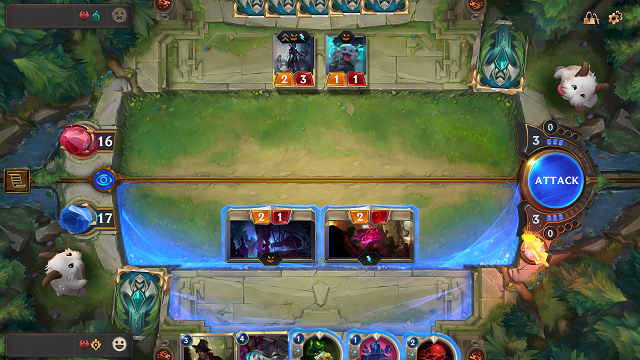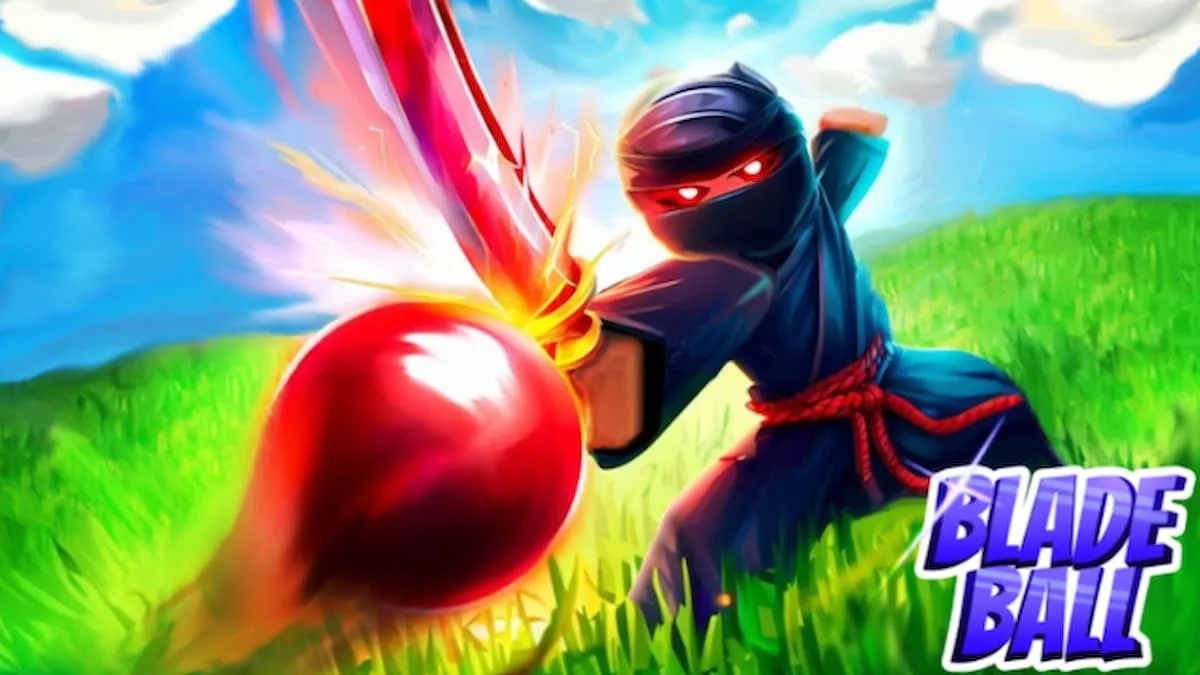Welcome to another guide in our series on Legends of Runeterra (LoR). To recap: I’m a Masters player on the EUW ladder in Runeterra and want to help the community improve. This guide does require basic knowledge of the game mechanics, but will hopefully, be accessible to all.
As I touched on at the end of my previous LoR guide on Open Attack, one of the most important decision-swaying factors in a card game is whether you’re ahead or behind.
To put it simply: when playing from behind, you want to take more risks.
By the same metric, when you’re ahead of your opponent, you should play safer. These are pretty sweeping generalizations, of course, and strictly speaking, the “ideal” play is never this simple. But that’s a good place to start.
What do we actually mean by ahead and behind, though?
When using these terms, we’re describing how likely we are to win given the current state of the board and each player’s hand. This fluctuates constantly with matchups, draws, and which cards each player decides to play, but you can get a pretty good idea of your win-probability once you get some decent experience.
To put it another way, we’re assessing whether we’re closer to meeting our win condition than the opponent is to meeting theirs.

Aggro decks, for instance, win by killing the opponent quickly — usually before turn 7 or turn 8 — but they quickly run out of steam and struggle to defeat decks that can heal and grind out games.
Above is an example of a fairly popular Aggro deck, and you can see that only one card costs more than 3 mana to play.
If you’re playing against an Aggro deck that’s taken 15 HP off your Nexus by turn 4, then you’ve fallen pretty far behind. If you still have 10 HP on turn 10 and they only have two cards in hand with an empty field, it’s safe to say you’re probably ahead.
In general, though, you’re normally behind when playing against an Aggro deck. The game becomes a race to stabilize your board before you die.
How should this affect our play, and what do we mean by risks? Well, let’s look at some examples of how to play when ahead and behind to get a better idea of what we mean.
Risky Business

In this first example, we’re ahead while playing a Corina Control mirror match in Masters. For context: when playing against decks (like ours) that don’t summon many units, playing Commander Ledros on turn 9 is pretty much always better than playing Corina Veraza.
Our opponent played Corina last turn, which indicates that they didn’t have a Ledros in hand. We played ours in response, putting us firmly in the lead. Our Nexus has higher HP than our opponent’s, we likely have a better hand than them, and we have a better field.
In this position, we could use Statikk Shock to dig for more burn damage or attack to force them to trade and then replay our Ledros. However, the safest play here is to summon our own Corina. This presents the biggest upfront threat by summoning another attacker and dealing some direct burn damage in the process.
A good answer to this would be my opponent playing The Ruination, but we don’t particularly mind that. We’re getting the burn damage in, and we have more in our hand to close out the game.
In the second example, below, I’m playing the same deck against a Yasuo deck.

I’m pretty far behind in this game, with less Nexus HP than my opponent, a worse field, and their Yasuo is nearly leveled up. If I can’t kill their units or summon more of my own, they will most likely kill me on their next attack.
With the hand I have, playing Commander Ledros feels like the safe play, as I know my opponent likely has Deny and the alternative (The Ruination) would leave me without any units if it’s countered.
This is likely the wrong call, however, and I should take the risk on Ruination. Why? Simply put, Ledros isn’t enough to turn this game in my favor, and I’ve stifled my future turns.
In the position I am in, hoping my opponent has no Deny is certainly a big risk, but the payoff for gambling and successfully killing their board will be a huge swing in my favor.
My opponent ended up using Deny as I feared, so playing Ruination on my turn is also now less valuable as my opponent will have the mana to re-establish a board and finish me off with an Open Attack when I pass back to them.
If I played these two cards in the opposite order, I’d have a better chance of winning than I do in the screenshot above.

Don’t worry if these examples aren’t immediately useful, as they are very specific. The main thing to take away from this guide is that when you’re ahead, you want to be careful about what cards your opponent might have.
Think about what they could do to counter you, and play the least committal card(s) that still help you get your win condition.
When you’re behind, you might need to take risks and hope your opponent doesn’t have any answers to your cards. Think about whether you can still win without taking these risks, and remember you can’t win every game.
Sometimes your opponent will have the perfect hand to beat you, but that’s OK. Dust yourself off and move onto the next match. That’s the nature of card games!
If this guide was helpful, why not check out our dedicated page for Legends of Runeterra — we have lots of guides already out, with more coming very soon!







Published: Apr 25, 2020 02:30 pm